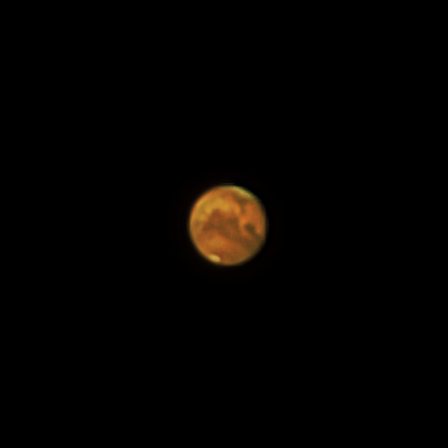At around midnight (BST) on 18 September 2020, just as the clouds were rolling in, and just before I packed up (after photographing the Heart Nebula), I spent 5 mins on Mars, peering through a layer of cloud, which started off thin, and ended up as completely obscuring. I swapped out my Altair Hypercam 294C camera (with a larger 4/3″ sensor) for my GPCAM3 290C planetary camera (plus a 3× Barlow lens), refocused, and slewed over to Mars. Considering this was taken with my 102-mm f/7 telescope, which doesn’t have the focal length or aperture for planetary work, I’m pretty pleased with this outcome. Several surface features are visible, including the ice caps, which I have annotated in the image below. This is my first photo of Mars in a very long time (and many kit upgrades have happened since then). It will be interesting to see the comparison if I attempt it more thoroughly on another night.
Mars will reach its opposition on 13 October 2020 (the opposition of Mars is when Earth makes its closest approach, when it passes between Mars and the Sun). Until then, it will continue to appear bigger every day. Mars is still a tiny target though, and this photo was heavily affected by cloud, turbulence of the atmosphere, and not enough frames. That said, I’m pleasantly surprised how it looks in the end!
Frames
- 1913× 30-ms light frames (50% best frames stacked)
- Dark frames used but no other calibration frames
Equipment
- Explore Scientific ED 102 mm Apo f/7 refractor
- Sky-Watcher EQ6-R PRO SynScan GOTO equatorial mount
- Altair GPCAM3 290C colour camera (with UVIR window fitted)
- Celestron X-Cel LX 3× Barlow
Software
- Sharpcap
- PIPP (Planetary Imaging Preprocessor)
- AutoStakkert!
- Registax
- Photoshop



